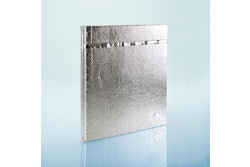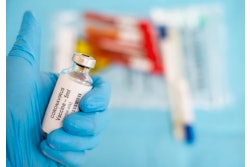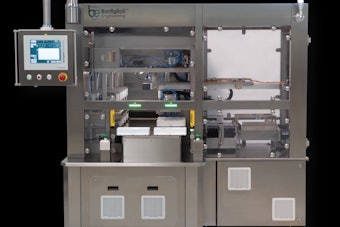A panel gathered at the TempPack conference at the 2022 ISTA FORUM in San Diego to talk about the real-world challenges and best practices for monitor qualification in thermal packaging. Key takeaways included the following:
1. Dry ice packouts: Mark Maurice, solutions consultant, Sensitech, noted that some in the industry don’t realize that LCD screens don’t necessarily operate at those ultra low temperatures, making it appear that the sensor has stopped functioning. Testing your sensors will offer confidence that the sensor is still monitoring correctly even if the screen is not, or help you discover that the temperature recording device (TRD) truly did stop mid-shipment. The sensor should continue working if it is designed for those conditions.
Moderator Bryan Cardis, sr. advisor, Eli Lilly and Company, noted he has heard of scenarios where technicians discarded the TRD because the screen was bleeding, so it’s important to define how to handle failure modes properly. Some data is likely recoverable as long as the TRD is receivable.
2. Startup delay: There is often a duration of time that the data logger takes to get down to or up to the desired temperature. Because of how TRDs are designed, be aware of the response rate of that unit and ensure there is a startup delay for logging. (Document how long it takes for the whole system—panels, gel packs, PCMs to all equilibrate and come to within your temperature range.) Additionally, make sure your SOP defines startup and when the shipment is considered "ended" to keep quality from chasing down false alarms.
3. A note on scanning: Arif Rahman, director of technology, MaxQ Research LLC, explained that packaging for hospital blood products may be tagged with a chemical indicator. An issue can arise when the employee sets the package on the table to scan it before placing it in a secondary container: if the chemical indicator makes contact with the table as it’s set down, it can warm up and change color leading to a false alarm.
4. Disconnecting probes: If a probe can easily be disconnected from its electronics, ensure you align with your metrology group to confirm whether that’s acceptable, said Eric Silberstein, principal, eBiotech Consulting, LLC.
From the audience, Network Partners’ Karen Greene explained that standalone temperature data loggers are calibrated as a system, meaning as either a single channel or multi-channel device, any swap out of the temperature probe will invalidate the calibration status. The probe or probes must remain with the logger to maintain appropriate calibration status. As a best practices note, it is highly recommended that frequent quality/temperature performance checks are executed on the temperature data logger to ensure temperature performance within the calibration tolerances. As a typical calibration period is a 12-month interval, it could be problematic to discover that the logger was found “out of tolerance” at the 12 month calibration interval as it can call your data in to question during that interval. When did the logger fall out of tolerance? What impact does the “out of tolerance” condition have on your data?
5. Multi-use TRD recovery: Silberstein also cautioned about cases where a multi-use TRD (also referred to as a reusable device) cannot be located for its 1-year recalibration. People may stick a TRD in a desk drawer for six months, or it may not return from its original destination. Brian Wallin noted that this can lead to costly and frequent deviations for devices not found. Silberstein recalled an example where quality asked him to find a device, but it was likely located in Puerto Rico, far from the California facility it originated from.
6. TRD ownership: If you’re implementing multi-use TRDs, you need to consider the full lifecycle of the devices: reverse logistics, upkeep, and purchasing. Silberstein noted that for many companies, it may be best to put ownership of TRDs on the transportation service provider. Because a third party has a wide network, it might be ok for them to let a device sit in another country for a while and wait to send several back after they’ve accumulated, but he doesn’t see the value for many biotech companies to handle the work of TRD upkeep and logistics.
7. Integrated TRDs: Some packaging suppliers integrate TRDs into their shippers, and there are pros and cons to be aware of. They offer convenience to end users as all-in-one systems, and they eliminate concerns over qualifying probe locations.
But before implementing, consider protocols for battery replacement, data access for the end user, and if additional (supplier-specific) software will be necessary to read the data. If the vendor owns the process and data, will there be an extra step for issue resolution, where you as the end user have to work with their customer service department instead of your own quality group? Address gaps in inter-company communication.
Carolyn Williamson highlighted that if the TRD battery dies, you’ll have to remove it. A battery has so much shelf life, and you’ll need safety stock to deal with supply chain disruptions, which will require space at your facility.
8. Light sensors: Questions remained at the panel regarding qualification of light sensors designed to alert an end user if a shipper is opened. Williamson said she determined in at least one case that the sensor needed a certain level of light to register, so she didn't feel confident that that feature could prove to a health authority that it wasn’t opened.
9. PDF data transfer: Maurice said not all PDFs are the same—there are higher and lower levels of encryption. Some monitoring systems embed their data in PDFs that are fully open source which can be modified with Word.
He recalled an investigation into a freight forwarder that falsified a document because of the high value of the shipments, but he also stressed that the vast majority of companies are trustworthy. “It goes to 21 CFR part 11. If you can modify a document with Word, then you have to do a risk assessment,” he said. Photo editing software may be able to make changes, so it’s important to ask yourself how you’re managing the process to stay compliant with 21 CFR part 11. He also cautioned that even email is being scrutinized as a non-validated process for data transfer.
10. Predictive models: More and more focus is being placed on the power of predictive models to try and intervene when an excursion appears likely. An audience member asked, “How do quality groups look at prediction? How do you validate a predictive model?”
The panelists said this will take time. Over time, you’re collecting data, feeding it back in. You keep tweaking the process and analysis so that the model becomes more accurate and confidence levels increase, explained Maurice.
Silberstein said bringing in a neutral third party may help for testing the 100 or 200 test cases that this effort will need over the course of a year, along with issuing papers on the topic and ensuring it’s being computer validated.
Rahman agreed, “It’s a process. First, we have to come up with a lot of test cases. We want to do performance verification, that continuous monitoring to know that it’s still matching the prediction.”
Parting words: While various features beyond temperature can be measured (e.g. light, humidity, and shock), ask yourself if those sensors are necessary to your process. If they're not useful to you, then consider whether you need to go through the work of qualifying them.

























